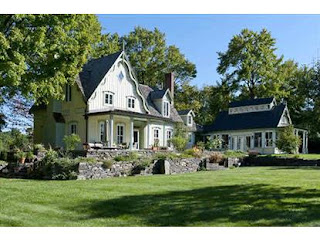Germantown (town), New York
From Wikipedia, the free encyclopedia
| Germantown, New York | |
|---|---|
| Town | |

Town hall, 2013
| |
 Location of Germantown, New York | |
| Coordinates: 42°08′03″N 73°52′16″WCoordinates: 42°08′03″N 73°52′16″W | |
| Country | United States |
| State | New York |
| County | Columbia |
| Established | 1788 |
| Government | |
| • Type | Town Council |
| • Town Supervisor | Roy Brown (R) |
| • Town Council | |
| Area | |
| • Total | 13.9 sq mi (36.1 km2) |
| • Land | 12.1 sq mi (31.3 km2) |
| • Water | 1.8 sq mi (4.7 km2) |
| Elevation | 249 ft (76 m) |
| Population (2010) | |
| • Total | 1,954 |
| • Density | 161/sq mi (62.3/km2) |
| Time zone | Eastern (EST) (UTC-5) |
| • Summer (DST) | EDT (UTC-4) |
| ZIP code | 12526 |
| Area code(s) | 518 Exchange: 537 |
| FIPS code | 36-28772 |
| GNIS feature ID | 0978998 |
Germantown is a town in Columbia County, New York, United States. The population was 1,954 at the 2010 census.[1] Germantown is located in the southwest part of the county, along the east side of the Hudson River.
Contents
History[edit]
The first known inhabitants of the area were the Mahican. The first Europeans to buy property in the county were Dutch.
Robert Livingston, a Scots immigrant, bought thousands of acres from the Native Americans, before gaining a huge grant from the Crown. He owned a total of 160,240 acres (64,850 ha). He was made lord of the Livingston Manor. In 1710, he sold 6,000 acres (2,400 ha) of his property to Anne, Queen of Great Britain, for use as work camps and resettlement of Palatine German refugees.[2]
Some 1,200 persons were settled at work camps to manufacture naval stores and pay off their passage as indentured labor.[3] Known as "East Camp", the colony had four villages: Hunterstown, Queensbury, Annsbury, and Haysbury.[4] The area was later renamed "Germantown". In 1775 Germantown was formed as a "district".[5]Germantown was one of the seven original towns of Columbia County established by an act passed March 7, 1788. (The others were: Kinderhook, Canaan, Claverack, Hillsdale, Clermont, and Livingston).[6]
In March 1845, a boat-load of people from East Camp, who had been to Hudson to make purchases, was run over first by a scow, and then by the steamboat South America. All nine individuals were lost.[7]
The Barringer–Overbaugh–Lasher House, Clermont Manor, Clermont Estates Historic District, Charles H. Coons Farm, Dick House, German Reformed Sanctity Church Parsonage, Hudson River Heritage Historic District, Stone Jug, and Simeon Rockefeller House are listed on the National Register of Historic Places.[8][9]



















Mi perdo nel vostro essere altrove senza dimenticare le origini. Gioacchino Ruocco
RispondiElimina